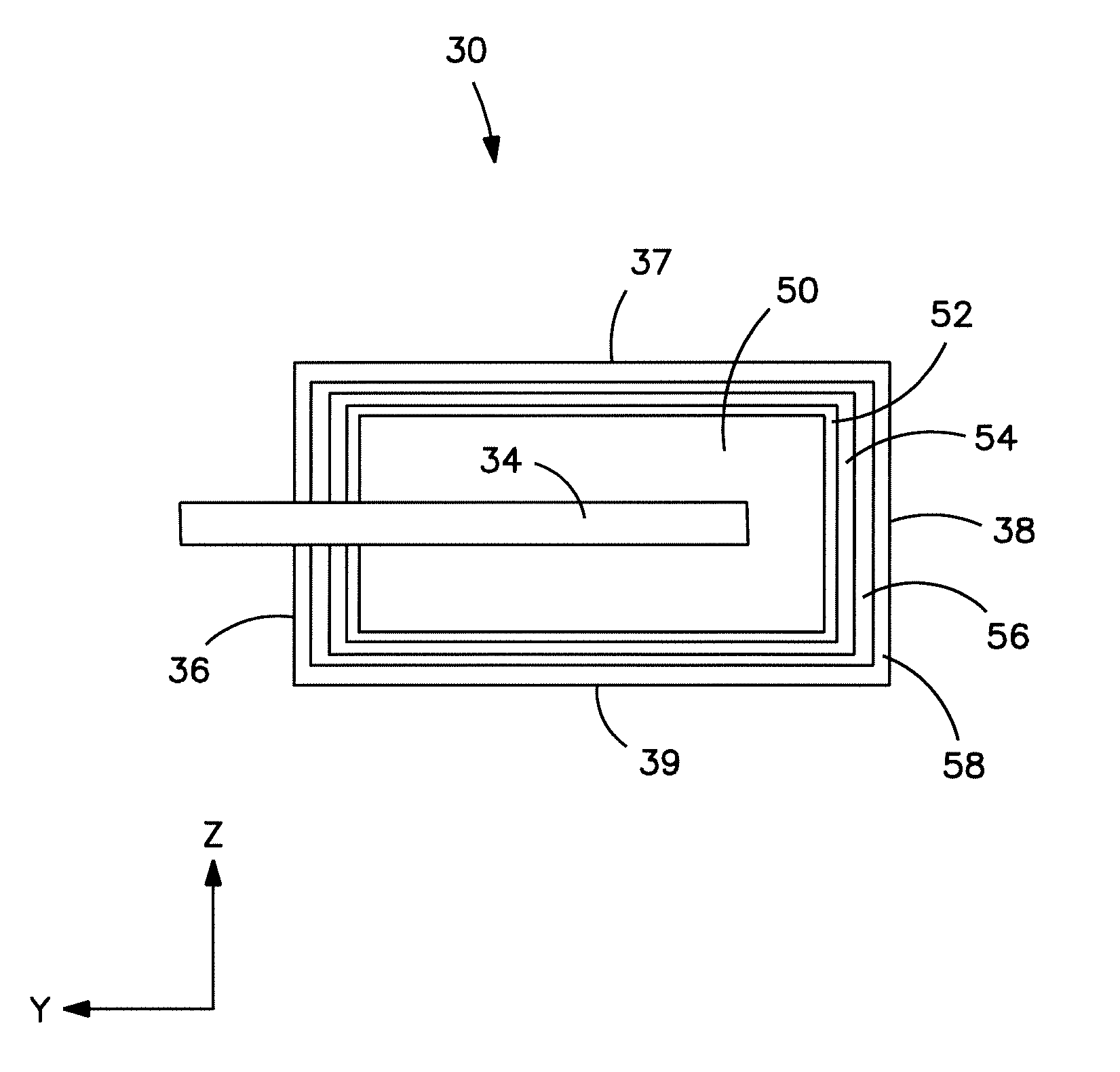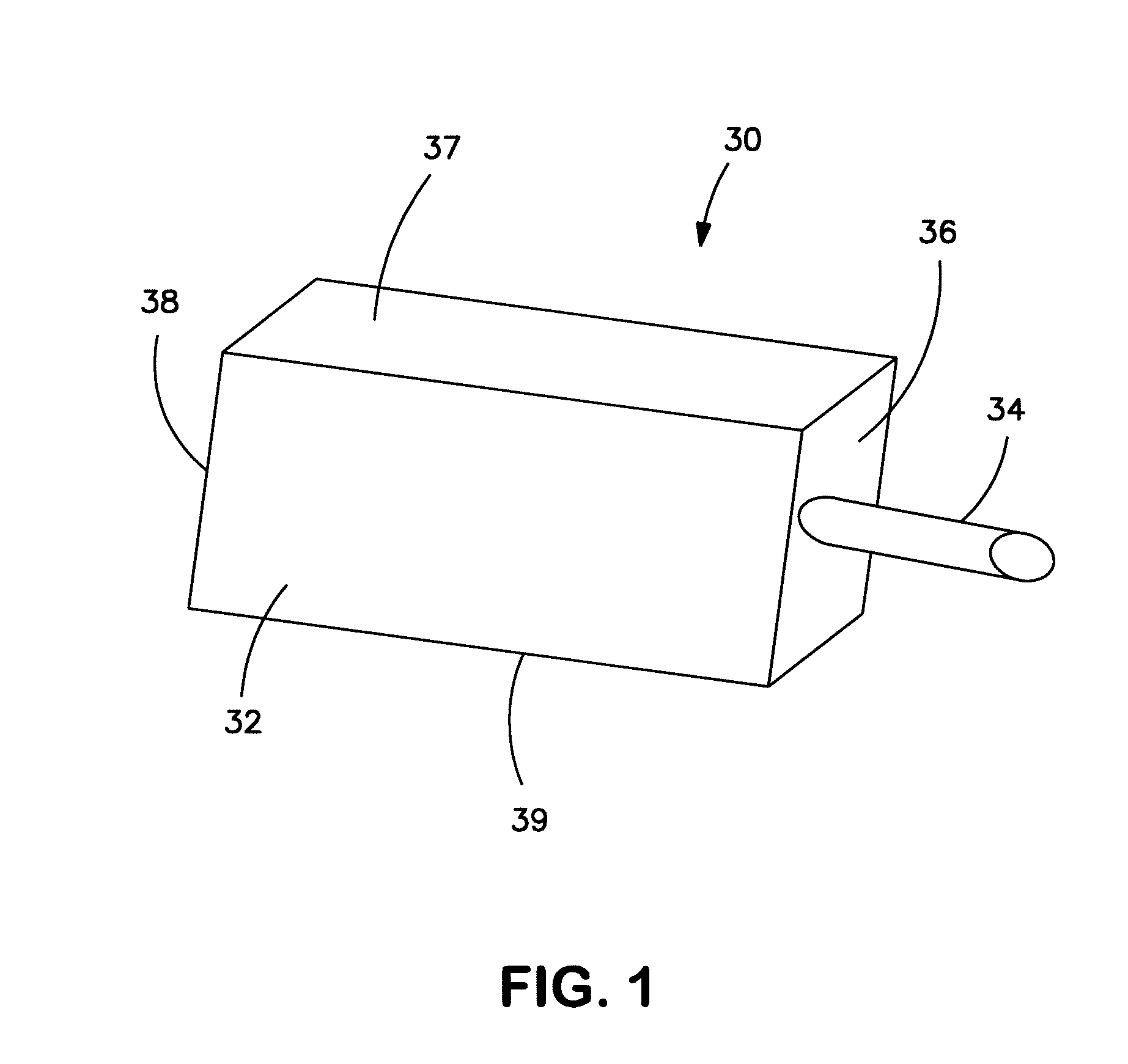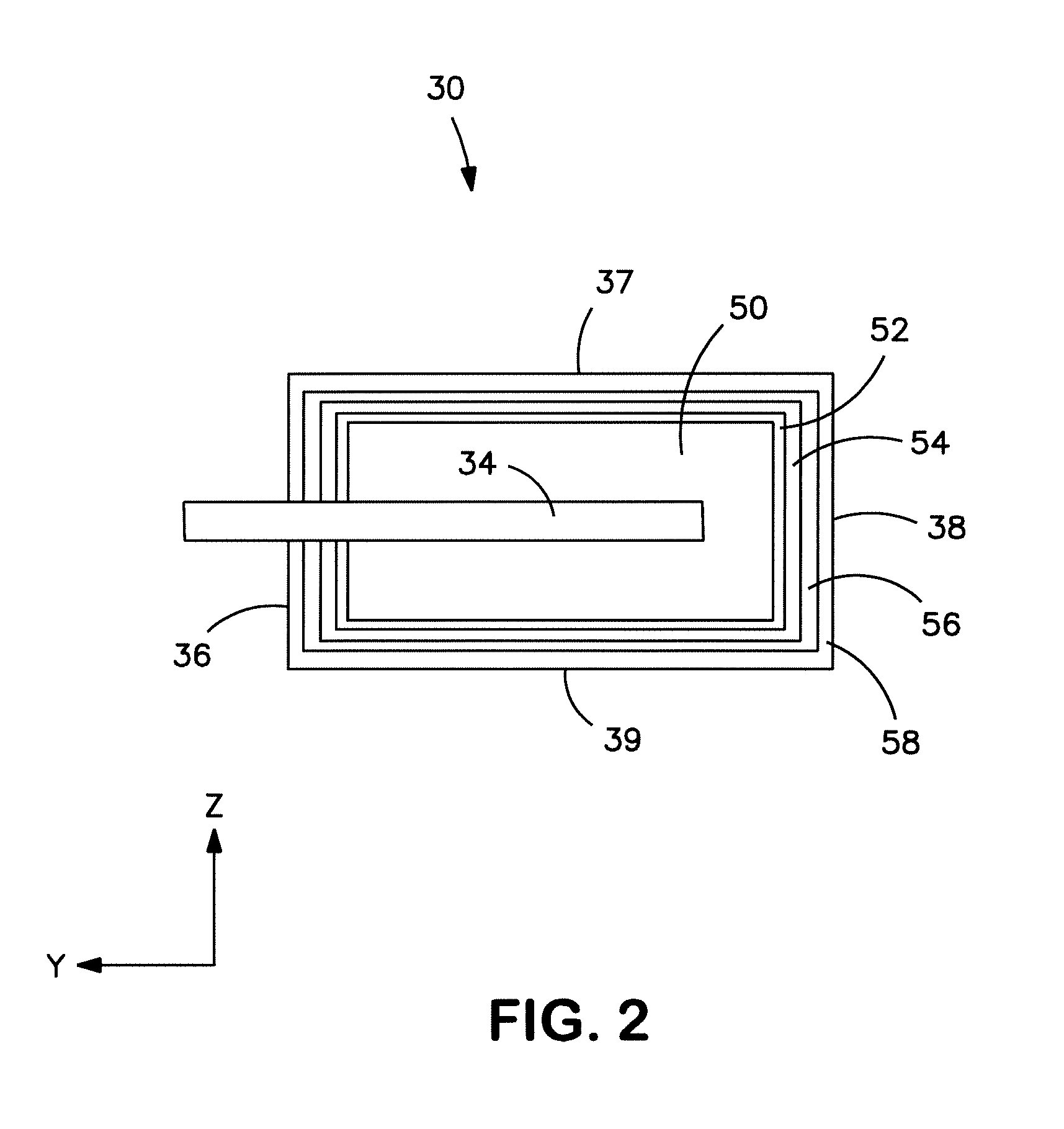Doped ceramic powder for use in forming capacitor anodes
a technology of ceramic powder and capacitor, which is applied in the direction of capacitor electrolytes/absorbents, conductive materials, electrical apparatus, etc., can solve the problems of capacitor damage or destruction, formation of electrically conductive paths, and inability to meet the rated voltage of 16, 20 or 35 volts,
- Summary
- Abstract
- Description
- Claims
- Application Information
AI Technical Summary
Benefits of technology
Problems solved by technology
Method used
Image
Examples
example 1
[0041]NbO powder (HC Starck, 80,000 μF*V / g) was manually pre-mixed with niobium phosphide (325 mesh, Alfa Aesar) to obtain final phosphorous concentrations of 100, 200, 500, 1000 ppm. The resulting doped powder was homogenized in a Turbula® powder mixer. An aqueous solution was added to the dry powder that contained a polyethyloxazoline (“PX”) binder (2 wt. % PX based on the dry weight of the doped NbO powder). The binder solution and doped powder were manually mixed together. Thereafter, the powder was dried at 85° C. for 4 hours to evaporate the water. The powder was then embedded with a tantalum lead wire and pressed on a top / bottom press machine to a density of 3.4 g / cm3. The binder was then removed by placing the pellet into a nitrogen atmosphere at a temperature of 400° C. to 500° C. The pellet was then sintered at a temperature of 1520° C. for 10 minutes in an argon atmosphere.
[0042]To anodize the tantalum anode, it was dipped into a weak phosphoric acid / water solution having...
example 2
[0046]Capacitors were formed in the same manner as described in Example 1, except that the starting NbO(N) powder contained 3,000 parts per million of nitrogen. Once formed, various electrical parameters were measured and twenty-five (25) of the capacitors were subjected to life testing. The results are set forth below.
[0047]
PhosphorusNumber of DCLNitrogen contentcontentDCLrejects after life[ppm][ppm][μA]testing3,00000.10125 rej3,0001000.04525 rej3,0002000.12025 rej3,0005000.00125 rej3,0001,0000.05325 rej
[0048]Doping of NbO powder with phosphorus shows lower DCL results than in Example 1. It is expected that higher phosphorous concentrations would also lead to improved DCL stability.
example 3
[0049]Capacitors were formed in the same manner as described in Example 1, except that the starting NbO powder contained 5,000 parts per million of nitrogen. Once formed, various electrical parameters were measured and twenty-five (25) of the capacitors were subjected to life testing. The results are set forth below.
[0050]
PhosphorusNumber of DCLNitrogen contentcontentDCLrejects after life[ppm][ppm][μA]testing5,00000.10125 rej5,0001000.04525 rej5,0002000.12025 rej5,0005000.00125 rej5,0001,0000.05325 rej
PUM
| Property | Measurement | Unit |
|---|---|---|
| breakdown voltage | aaaaa | aaaaa |
| density | aaaaa | aaaaa |
| density | aaaaa | aaaaa |
Abstract
Description
Claims
Application Information
 Login to View More
Login to View More - R&D
- Intellectual Property
- Life Sciences
- Materials
- Tech Scout
- Unparalleled Data Quality
- Higher Quality Content
- 60% Fewer Hallucinations
Browse by: Latest US Patents, China's latest patents, Technical Efficacy Thesaurus, Application Domain, Technology Topic, Popular Technical Reports.
© 2025 PatSnap. All rights reserved.Legal|Privacy policy|Modern Slavery Act Transparency Statement|Sitemap|About US| Contact US: help@patsnap.com



